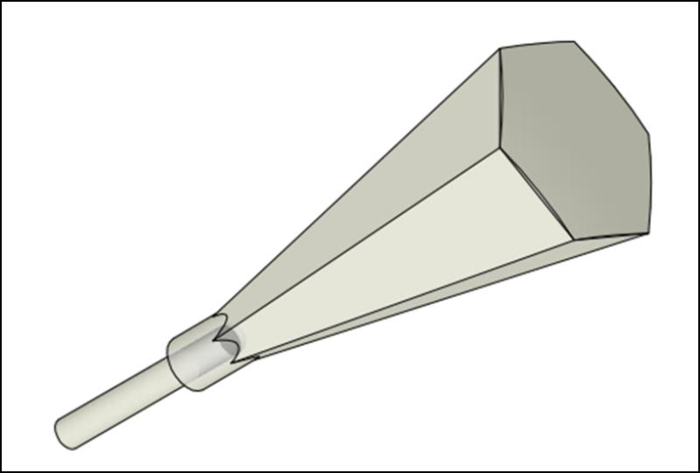
A team of Vietnamese scientists has successfully filed a patent application in the US for their non-electric lighting equipment, a cost-saving solution for certain projects, especially "tube" houses in Vietnam.
 |
A team of Vietnamese scientists has successfully filed a patent application in the US for their non-electric lighting equipment, a cost-saving solution for certain projects, especially “tube” houses in Vietnam.
The registered patent in the US is for a “focusing lens coupled with optical fibre and sunlight-receiving devices using these lenses”, made public on April 5, 2018.
The equipment can be installed on a roof which, thanks to sunlight conversion, helps light the house on all floors in the house through equipment connected to the same system.
The creators of the invention are Dr Nguyen Tran Thuat from the Nano and Energy Center, Dr Hoang Chi Hieu from Physics Faculty, Nguyen Quang Quan and Ho Duc Quan, former students of Hanoi University of Natural Sciences, and Dr Nguyen Hoang Hai from Hanoi National University.
The original prototype for the team to analyze was a sunlight-converging device using a mechanical system. The strong point of the device was that it could collect the entire spectrum of solar energy (both visible and infrared light). However, it required strict maintenance and had a complex operation principle.
The Vietnamese scientists decided to fix the problems of the device and created a new lighting device of their own, which has been registered in the US.
The patented device operates on the transmission device, so that only visible light can be obtained. The device is easy to use and does not require much maintenance.
The team has plans to develop a new prototype with lower costs. Liquid would be used instead of transparent solids in lenses and optical fibers.
To date, the two prototypes have been patented and the research team intends to continue to register the next prototypes.
The team said there are two problems. First, the device can be used only in daylight. And second, the owners have to observe standards in design and construction. The first problem can be settled by integrating diffusion units with electrical lamps.
However, the inventors said that the application potential in Vietnam is great. Tube houses, which are very common in Vietnam, in general, are not well lighted.
“The development of specific solutions tailored to Vietnamese conditions has great advantages,” Thuat said.
Thuat said the team met many difficulties when following the complicated procedures to file for patent registration for the lighting device in the US. The language barrier was one. It was also a challenge to find a law firm that could help them follow the procedures.
(Source: VNS)





